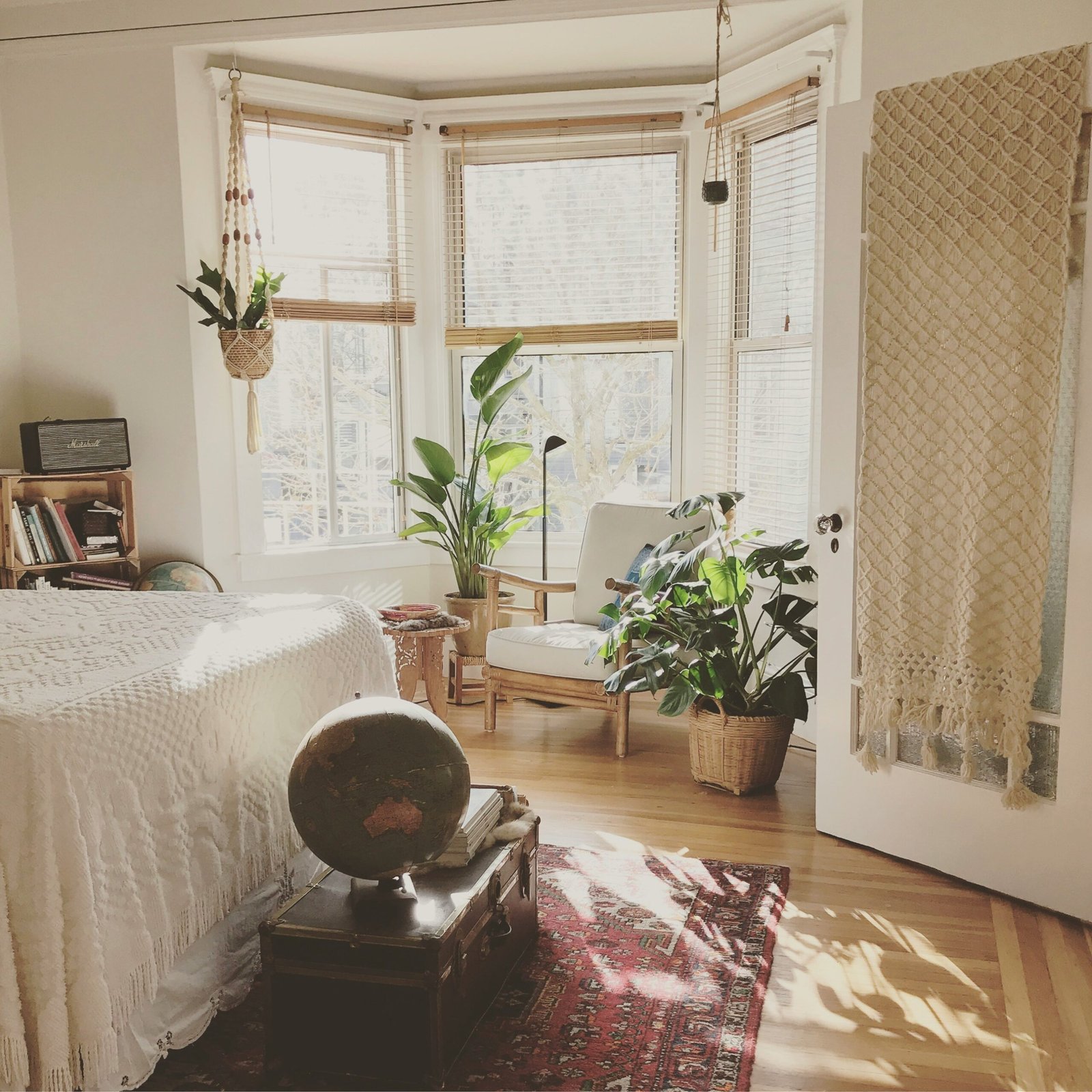Introduction to Vastu Shastra and Seasonal Adjustments
Vastu Shastra is an ancient Indian philosophy that focuses on the harmonious arrangement of spaces to promote health and well-being. It is grounded in the belief that the design and orientation of a building can significantly impact the lives of its inhabitants by aligning them with the natural forces of the universe. The principles of Vastu encompass various elements, including geography, climate, and the cardinal directions, which dictate the optimal layout and design of a structure. This architectural science aims to create an environment that fosters prosperity, peace, and a balanced lifestyle.
As seasons change, so too do the energies surrounding our living spaces. The concept of seasonal adjustments within Vastu Shastra is essential for maintaining this harmony throughout the year. In particular, the transitions into winter and summer bring unique challenges and opportunities for optimizing well-being at home. For instance, the cold temperatures and reduced sunlight during winter can lead to stagnation of energy, negatively affecting mood and health. Conversely, the heat and intensity of summer can create an overabundance of energy that may feel overwhelming. Therefore, appropriately adjusting living spaces according to the seasons can enhance the overall quality of life.
During winter, Vastu adjustments may involve incorporating warm colors, rearranging furniture to promote comfort, and ensuring proper ventilation to maintain a cozy atmosphere. In contrast, summertime adjustments might focus on maximizing airflow, utilizing natural light, and incorporating cooling shades or plants to counterbalance the heat. By following Vastu principles and making these seasonal adaptations, individuals can create environments that not only respect the natural cycles but also promote balance and harmony within the home. Embracing this philosophy encourages a more conscious approach to living spaces, enriching the inhabitants’ overall experience.
Understanding the Energy of Seasons
The transition between seasons is a fundamental aspect of life, influencing not only the natural world but also the energy dynamics within our homes according to Vastu Shastra. Understanding the characteristics of winter and summer is essential in making appropriate adjustments to improve the overall harmony and energy flow in your living space.
In Vastu, winter is often associated with the element of water and embodies qualities such as stillness, introspection, and rest. The cold and dark nature of winter encourages us to create spaces that instill warmth and comfort. During this season, homes should be oriented to receive ample sunlight. This sunlight helps counterbalance the inherent chill, promoting a sense of brightness and positivity. Utilizing warm colors and incorporating cozy textiles can also enhance the energy flow, creating an inviting atmosphere that uplifts the spirit.
Conversely, summer is linked to the fire element, symbolizing heat, growth, and activity. As the days become longer and warmer, the energy in our homes should reflect this dynamic shift. It is advisable to allow for more ventilation and airflow, which aids in dissipating excessive heat. The placement of mirrors and lighter colors can help in amplifying natural light, promoting a vibrant and energized ambiance. Furthermore, incorporating plants can enhance positive energy and filter the air, creating a refreshing environment that invigorates the inhabitants.
Understanding these seasonal influences is vital for optimizing the energy flow in a home. Adjusting to the characteristics of winter and summer through thoughtful design and arrangement can significantly enhance living conditions and overall well-being. As the seasons shift, so too should our homes, allowing us to harmonize with the natural energy cycles. Employing Vastu principles can lead to a more balanced life, in tune with both the internal and external environments.
Essential Vastu Principles for Winter Preparation
As winter approaches, it becomes essential to create an environment that promotes warmth, comfort, and well-being in your home. According to Vastu Shastra, a traditional Indian system of architecture and design, specific principles can be implemented to optimize your living space for the colder months. By adjusting the layout, furniture placement, and incorporating appropriate colors and materials, you can significantly enhance the energy of your home during winter.
One of the fundamental Vastu principles for winter preparation is to focus on the placement of furniture. Arrange furniture in a way that facilitates the flow of warm energy throughout your living spaces. For instance, positioning the living room seating area towards the south or west allows residents to benefit from mild sunlight exposure during the day, creating a naturally cozy atmosphere. Additionally, opting for rounded or softer furniture edges can promote a sense of comfort and ease, helping to soften the cold season’s harshness.
Colors play a significant role in how a space feels during winter. According to Vastu principles, warmer tones such as reds, oranges, and yellows can evoke feelings of warmth and security. Consider painting walls with these inviting colors or integrating them through textiles and furnishings. Moreover, using natural materials like wood and stone not only enhances the aesthetic value of your home but also contributes positively to the overall ambiance. Natural fabrics such as wool or cotton can further add to the cozy feel.
𖤐 Forbidden Dark Spells — Unleash Mystical Power
Harness the arcane, from hexes and curses to revenge and binding spells — real power for those who dare to command it.
Lastly, ensure that your home is well-lit during winter months. Natural light is vital; therefore, keep windows unobstructed to allow maximum sunlight to enter. When natural light is insufficient, utilize warm artificial lighting to maintain a comforting atmosphere. By applying these Vastu principles, your home can transform into a sanctuary of warmth and peace throughout the winter season.
Implementing Vastu Changes for a Comfortable Summer
As the summer season approaches, making specific Vastu adjustments in your home can significantly enhance comfort and well-being. The right modifications can help in maximizing air circulation, which is vital for maintaining a cool and refreshing environment indoors. First and foremost, it is essential to ensure that windows, doors, and vents are positioned and kept open to allow uninterrupted air flow. This consideration is crucial, especially for living spaces that receive direct sunlight during the daytime. Moreover, the placement of air conditioning units, ceiling fans, or exhaust fans should align with Vastu principles to optimize their effectiveness in cooling the home.
In addition to improving air circulation, incorporating cooling colors into your living spaces can vastly influence the overall atmosphere. Favor shades such as light blue, green, or pale yellow which evoke a sense of calm and tranquility. These colors can be introduced through paint, decorative elements, or even textiles like curtains and cushions. The careful selection of materials can also play a role in creating a comfortable setting; lightweight fabrics that promote airflow can be more favorable compared to thicker, heavier options.
Another key Vastu adjustment is the arrangement of furniture and spaces that promote relaxation. Ensuring that seating areas are oriented in a way that allows individuals to face the entrance can create a welcoming and harmonious environment. Additionally, incorporating indoor plants not only enhances aesthetics but also helps in purifying the air, which is beneficial during warmer months. Spaces designated for relaxation, such as a reading nook or meditation corner, should be aligned with Vastu norms to foster serenity and refreshment. Overall, these adjustments embody the essence of Vastu, transforming your home into a sanctuary that provides comfort and relief during the summer heat.
Vastu Tips for Optimizing Natural Light and Airflow
In the practice of Vastu Shastra, the energetic flow of a living space is deeply influenced by natural light and airflow. These elements are not only essential for creating a harmonious environment but also play a critical role in enhancing the overall well-being of the occupants. By understanding the importance of these factors, one can make simple adjustments to ensure a balanced and healthy home throughout the changing seasons.
To optimize natural light during winter, it is advisable to maximize sunlight exposure in your living areas. This can be achieved by ensuring that windows are unobstructed and using light-colored curtains that allow for ample light. Additionally, consider positioning mirrors strategically to reflect sunlight into the room, thereby increasing brightness without additional energy consumption. As the sun’s path is lower in winter, adjusting outdoor elements, such as trimming overgrown trees or shrubs, can help improve light entry into your home.
For summer, focusing on airflow can reduce the need for air conditioning, promoting a more natural cooling system. Open windows early in the morning and late in the evening to allow cooler air to enter. It is also beneficial to create cross-ventilation by strategically placing fans or utilizing window placements on opposite sides of the room. Incorporating louvered windows can enhance airflow, while screens can keep pests at bay. Installing ventilation grills in key areas can also facilitate better air circulation throughout the house.
Combining these strategies not only aligns your home with Vastu principles but also fosters an environment rich in vitality. Embracing both natural light and airflow serves as a foundation for a balanced and health-oriented lifestyle, which is crucial as the seasons change. By implementing these actionable tips, you can enhance your living space in accordance with Vastu, yielding benefits for both mind and body.
Seasonal Feng Shui in Combination with Vastu
Vastu Shastra and Feng Shui, both ancient systems of architectural planning and design, aim to create harmonious living environments that promote well-being and prosperity. While they originate from different cultures—Vastu from India and Feng Shui from China—these philosophies share several fundamental principles that can be synergistically employed for seasonal adjustments. Understanding the similarities and differences between Vastu and Feng Shui is crucial for effectively integrating these practices into one cohesive system for home enhancement throughout the year.
At the core of both Vastu and Feng Shui is the emphasis on energy flow, often referred to as “Chi” in Feng Shui and “Prana” in Vastu. Each discipline recognizes that the arrangement and orientation of spaces can significantly influence the energy present in those environments. For instance, both Vastu and Feng Shui advocate for clear paths and minimal obstructions to enable free energy flow, which becomes especially vital during seasonal transitions when environmental changes can impact indoor energy dynamics.
❤️ Powerful Real Love Spells That Work
Attract true love, reunite with your partner, and strengthen relationships with proven magic spells.
However, there are nuanced differences. Vastu primarily focuses on directional alignments, suggesting specific orientations for various activities and rooms, while Feng Shui incorporates elements such as color, seasonal influences, and individual needs to create balanced spaces. By harmonizing these approaches, one can optimize their living spaces for seasonal changes. For example, during the summer months in Vastu, enhancing the southern and southwestern areas with specific colors and materials can invigorate energy levels. Similarly, Feng Shui allows for incorporating seasonal elements like light fabrics and plants that resonate with summer energy.
By thoughtfully combining these two philosophies, one can create a home environment that is not only aesthetically pleasing but also conducive to overall health and prosperity. This balanced integration fosters a serene living space that adapts to both the ebb of seasonal winds and the changing energy patterns of each season.
Seasonal Decor: Aligning Aesthetics with Vastu
Seasonal decorating is a wonderful opportunity to refresh your living space while ensuring it aligns with Vastu principles. The art of Vastu Shastra emphasizes the importance of creating a harmonious environment that promotes positive energy flow. During transitions between winter and summer, adjusting your decor not only enhances the aesthetic appeal but also supports the energetic balance required for each season.
In winter, incorporating warmer colors and textures can help create a cozy atmosphere. Opt for rich hues such as deep reds, warm browns, or golden yellows in your fabrics and decorations. Using textiles like wool or velvet not only adds warmth but also aligns with the Vastu principle of using natural materials. You might consider draping thick curtains, layering rugs, or adding plush pillows to seating areas to invoke a sense of comfort and safety, essential during the colder months.
Conversely, during summer, the use of light colors and airy fabrics invites freshness into your home. Shades of blues, greens, and whites promote coolness and tranquility, reflecting the vibrant energy of this season. Lighter cotton or linen curtains can enhance airflow while maintaining privacy. Incorporating decorative elements like plants and flowers enhances the connection with nature, in harmony with Vastu guidelines, promoting vitality and positivity.
Another key aspect to consider is the arrangement of decor items. Ensure that your spaces are clutter-free, allowing for the unobstructed flow of energy, also known as “chi.” This can be achieved by thoughtfully positioning furniture and decor pieces to create balanced visual lines. By rotating or repositioning your seasonal decor according to Vastu principles, you can significantly enhance both the aesthetics and the energetic qualities of your home, ensuring it remains a supportive sanctuary throughout the year.
The Role of Plants in Seasonal Vastu Adjustments
Plants play a pivotal role in the practice of Vastu Shastra, particularly when it comes to seasonal adjustments. They not only enhance the aesthetic appeal of a home but also contribute significantly to the energy flow and ambiance within a space. The selection of appropriate plants according to the seasons can help to balance energies, promote well-being, and create a harmonious living environment.
During the summer months, it is essential to incorporate plants that can thrive in warmer temperatures and that offer cooling properties. For instance, plants such as Aloe Vera, money plants, and ferns are ideal choices as they are known to absorb heat and purify the air. Furthermore, tall plants placed strategically near windows can provide shade while enhancing privacy. In the Vastu context, these plants not only support physical comfort but also contribute positively to the emotional and spiritual well-being of the inhabitants by promoting tranquility and prosperity.
In contrast, winter brings a different set of challenges, making it crucial to select hardy plants that can endure lower temperatures while still contributing to positive energy flow. Indoor plants such as rubber plants, peace lilies, and snake plants are excellent for winter as they require minimal sunlight and help maintain humidity levels in cooler indoor environments. As per Vastu principles, these plants aid in absorbing negative energy and fostering a relaxed atmosphere conducive to introspection and rejuvenation during the colder months.
Moreover, integrating plants into both indoor and outdoor spaces can help facilitate a seamless connection with nature throughout the seasons. This not only promotes a sense of well-being but also aligns personal energies with the broader seasonal cycles. Ultimately, the careful selection and placement of plants into your Vastu home can play a significant role in achieving harmony and balance, aiding occupants in navigating the seasonal transitions with greater ease.
Practical Checklist for Seasonal Vastu Adjustments
As the seasons shift, it is essential to adjust your living environment in accordance with Vastu Shastra principles to ensure harmony and well-being. Below is a practical checklist tailored for both winter and summer preparations, enabling homeowners to implement necessary changes effectively.
1. Entrance Positioning: Ensure that the entrance to your home is free of clutter. In winter, open spaces in the front yard can enhance sunlight entry, which is beneficial during colder months. Conversely, in summer, consider adding shades or plants to reduce sun glare.
2. Living Room Adjustments: Position furniture to create a warm and inviting atmosphere in the winter. Utilize heavier drapes to keep warmth in, while in summer, opt for lighter fabrics that allow cooler air to circulate. Always ensure that seating arrangements promote conversation and connection.
3. Bedroom Arrangement: For winter, ensure your bed is positioned away from direct drafts while maximizing morning sunlight exposure. In summer, adjust your bedding to lighter materials, and place the bed in a manner that allows for a breeze without compromising comfort.
4. Kitchen Organization: Check that your kitchen promotes good energy flow. Ensure that the stove is placed in a direction that enhances cooking stability. In winter, warm food and spicy dishes should be prioritized, whereas, in summer, focus on light, refreshing meals to maintain a balanced diet.
5. Indoor Plants: Bring in indoor plants during both seasons to purify air and enhance positivity. In winter, opt for plants that thrive in lower light levels, while in summer, choose those that flourish in direct sunlight.
This checklist provides a structured approach to adjust one’s living space according to seasonal changes and Vastu principles. By implementing these adjustments, homeowners can create a more harmonious environment that aligns with nature’s rhythms.









